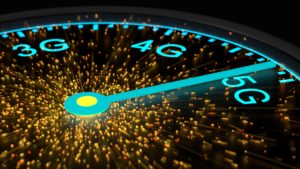Estimated reading time: 6 minutes
If it seems digital marketing buzzwords are flying at you faster than you can comprehend, you’re not alone. It’s normal to feel overwhelmed and exhausted by the pace of change in the marketing communications industry. This blog post is not intended to increase your anxieties, but rather to provide a few digital marketing definitions and explanations to help you keep up!
- Blockchain
Blockchain is one of those terms you’ve undoubtedly heard but may not know much about. You may have heard it in connection with bitcoins, but it’s now being adopted by a variety of businesses. In a nutshell, the blockchain was
 designed to be a more secure database than anything that previously existed. It has no central hub or processor, and nobody can edit any part of the database except for the data they added and therefore own. It is touted as very secure and transparent.
designed to be a more secure database than anything that previously existed. It has no central hub or processor, and nobody can edit any part of the database except for the data they added and therefore own. It is touted as very secure and transparent.
Blockchain has been discussed mostly in connection with banking and financial services, but the technology has far wider uses, including for marketing. An article in the Harvard Business Review, “How Blockchain Can Help Marketers Build Better Relationships with Their Customers,” explains that blockchain technology provides “transparency, immutability, and security — [making] it reliable and trustworthy for applications such as supply chain management, smart contracts, financial reporting, the Internet of Things, the management of private (e.g., medical) information, and, even, electrical grid management…Here, we see the disruptive potential of blockchain on marketing.”
Venture Beat published a detailed chart showing the blockchain marketing technology landscape.
Maryanne Murray at Reuters did a beautiful job of explaining blockchain graphically. Her graphic may be helpful in understanding how blockchain technology works.
- GDPR
GDPR stands for General Data Protection Regulation, a new set of European Union regulations governing the way data may and may not be collected over the internet, how it may be used and the safety and security of personal data that is collected. Europeans can stop reading here, since the media in Europe have reported extensively on GDPR, which went into effect in May 2018, but many American business people are ill-informed about it.
The objective of the regulations is to guarantee the privacy and rights of EU citizens as well as their safety and security. But even companies that aren’t in the EU are affected by GDPR regulations if they have online business that reaches into the EU. It doesn’t matter whether a company is a big multinational enterprise or a small business run from home; if the company collects data on European Union citizens, it must comply with GDPR regulations.
For example, under GDPR regulations, it is illegal to collect contact information of EU citizens from business cards obtained at a networking event at, say, an international conference and add them to a digital contact list without permission of the individuals. Data provided by website visitors in exchange for downloading information from a company’s website may not be used unless the individuals specifically opt in to allow its use. GDPR is complex, and much has been written to explain it, including this excellent article from Forbes about what small business need to know.
- Geo-Fencing
This is one of the most interesting new digital marketing definitions, to this writer, at least. It’s a technology that allows a marketer to send messages to smartphone or computer users in narrowly defined locations. SEO companies like Promo SEO leverage such technologies, they can optimize content and campaigns to reach audiences in particular regions, ultimately boosting the effectiveness of their SEO efforts.
For example, let’s say a restaurant at a mall wants to reach shoppers at that mall at 12 p.m. to promote a lunch special. They could use geo-fencing to send a banner ad to only the people within a certain radius of the mall. Or an exhibitor at a convention could send a banner ad just to people in the convention center to promote a product demonstration at the exhibit booth, or to let people know the company’s CEO will be speaking. Another example: a pharmaceutical company could send a banner ad about a new drug only to the staff of a medical center. Yet another example, from an article in CIO: if you have a smart refrigerator that keeps track of items you need to replenish, you could program it to remind you you’re out of milk the next time you pass the supermarket.
Geo-fencing uses either global positioning (GPS) or Internet Protocol (IP) addresses and serves up ads via Wifi or Bluetooth to target people within a certain area that could be as small as a single building.
- Shoppable Content
If you’re a consumer marketing guru, this term is probably old hat to you by now. But for those who work mostly in the B2B arena, the terminology may be new even if the concept sounds familiar. Shoppable content is a blend of content and commerce now available in different kinds of media. It combines engaging non-salesy content with an opportunity to shop for merchandise just a click away.
For example, Pinterest and Instagram (and soon Google) now have shoppable images available for marketers who pay for sponsored images to appear in search results. When you run your mouse over the image, brand names and details about products in the image are revealed and you can click through to purchase them. Search Engine Land wrote about this and shows some examples in this article. Many websites don’t get this fancy, but achieve the same thing using text under a photo that says “shop the look,” linked to purchase opportunities.
Shoppable videos have code embedded in them that allow viewers to click on a link to shop for the product they’re seeing in the video. Typical shoppable content, whether a blog or a video, might be a fashion trends report showing hot new fashion items. One Kings Lane has reportedly used shoppable images, and fashion and beauty brands that have used shoppable videos include Kate Spade, British men’s fashion brand Ted Baker and Cover Girl.
- 5G
Yes, you know 5G is the next generation of mobile phone technology, and you may have heard it’s going to be here  soon. There will be 5G phones on the market at the end of this year and big telecom carriers have been pouring tons of money into building 5G networks. But 5G isn’t just the ho-hum next generation, it’s been heralded as truly breakthrough technology that’s so fast—10 times faster than 4G—it will be practically instantaneous. It will enable new types of apps, and experts say it will speed up the adoption of self-driving cars, bring artificial intelligence (AI) into every day/all day use, lead to even more video use online, increase virtual reality and augmented reality use, be used in medicine, education and in ways still unforeseen. AT&T offers DIRECTV Stream packages to choose from, more information here.
soon. There will be 5G phones on the market at the end of this year and big telecom carriers have been pouring tons of money into building 5G networks. But 5G isn’t just the ho-hum next generation, it’s been heralded as truly breakthrough technology that’s so fast—10 times faster than 4G—it will be practically instantaneous. It will enable new types of apps, and experts say it will speed up the adoption of self-driving cars, bring artificial intelligence (AI) into every day/all day use, lead to even more video use online, increase virtual reality and augmented reality use, be used in medicine, education and in ways still unforeseen. AT&T offers DIRECTV Stream packages to choose from, more information here.
Finally, some advice to corporate marketers: don’t lose too much sleep about keeping up with digital marketing jargon. There will always be new concepts coming at you. You should be able to rely on your communications agency to help you keep up with and assess the latest trends, since agency staff work with digital marketing tools day in and day out. Your overview of your company’s needs, challenges and strengths are vital in working with your agency to analyze which of these trends and new offerings might make sense for your company.